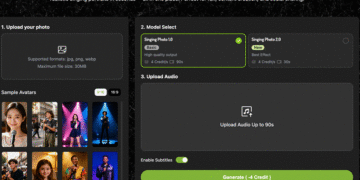eCommerce success is not just about traffic. It is about knowing your audience, offering the right deal at the right time, and making every visit count. This is where smart targeting strategies come in. They allow you to personalise offers and optimise conversion rates while protecting your margins. Read on to learn how smart targeting could transform your online performance.
Why Smart Targeting Matters
Smart targeting means focusing your marketing efforts based on customer behaviour, intent, and past actions. It shifts your strategy from broad assumptions to real-time, data-led decisions.
For example, the RevLifter platform uses behavioural segmentation and machine learning to create personalised campaigns that increase order values and reduce abandonment. This approach ensures that each visitor sees the most relevant deal, making them more likely to convert.
The Role of Real-Time Personalisation
Real-time personalisation means adapting offers and content as the customer browses. This can include pop-ups, overlays, or banners triggered by specific behaviours, such as inactivity or exit intent. When done correctly, real-time personalisation can:
- Improve the shopping experience
- Reduce bounce and abandonment rates
- Increase trust and brand perception
This strategy is especially effective in high-return industries such as beauty, fashion, and consumer electronics, where competition is fierce and margins must be carefully managed.
Segment and Conquer: Behavioural Targeting
One of the most effective ways to boost revenue is through behavioural segmentation. This involves dividing users into groups based on habits, such as:
- First-time visitors vs repeat customers
- Cart abandoners vs checkout initiators
- High spenders vs price-sensitive browsers
By understanding where each user stands in the buying journey, you can serve personalised offers that are far more likely to convert.
How to Optimise Offers for Maximum Impact
Smart targeting allows you to boost revenue without slashing prices. Instead of offering sitewide discounts, present deals only to users who are on the verge of dropping off or need a nudge to complete a purchase.
A few proven tactics include:
- Exit-intent offers to prevent abandonment
- Spend more, save more deals to encourage higher AOV
- Time-sensitive promotions to create urgency
- Offer wallets to let users store and use deals later
These techniques, when tested and refined, can improve both short-term conversions and long-term profitability.
Use Data to Continuously Improve
Smart targeting is not a set-and-forget strategy. Instead, you should focus on A/B testing, real-time analytics, and automation to continuously improve results. By measuring what works and optimising accordingly, businesses can stay agile and maximise their promotional impact.
This ongoing refinement ensures that every campaign delivers value, not just in sales, but also in customer insight and brand growth.
Final Thoughts
Targeting every visitor with the same offer is outdated. By using smart targeting strategies, you can increase your eCommerce revenue, reduce waste, and build loyalty with more personalised interactions.
Whether you’re trying to reduce cart abandonment or improve average order value, the key is understanding your customer and tailoring your message to match. Smart targeting does not just improve results, it builds a better shopping experience.
David Prior
David Prior is the editor of Today News, responsible for the overall editorial strategy. He is an NCTJ-qualified journalist with over 20 years’ experience, and is also editor of the award-winning hyperlocal news title Altrincham Today. His LinkedIn profile is here.













































































